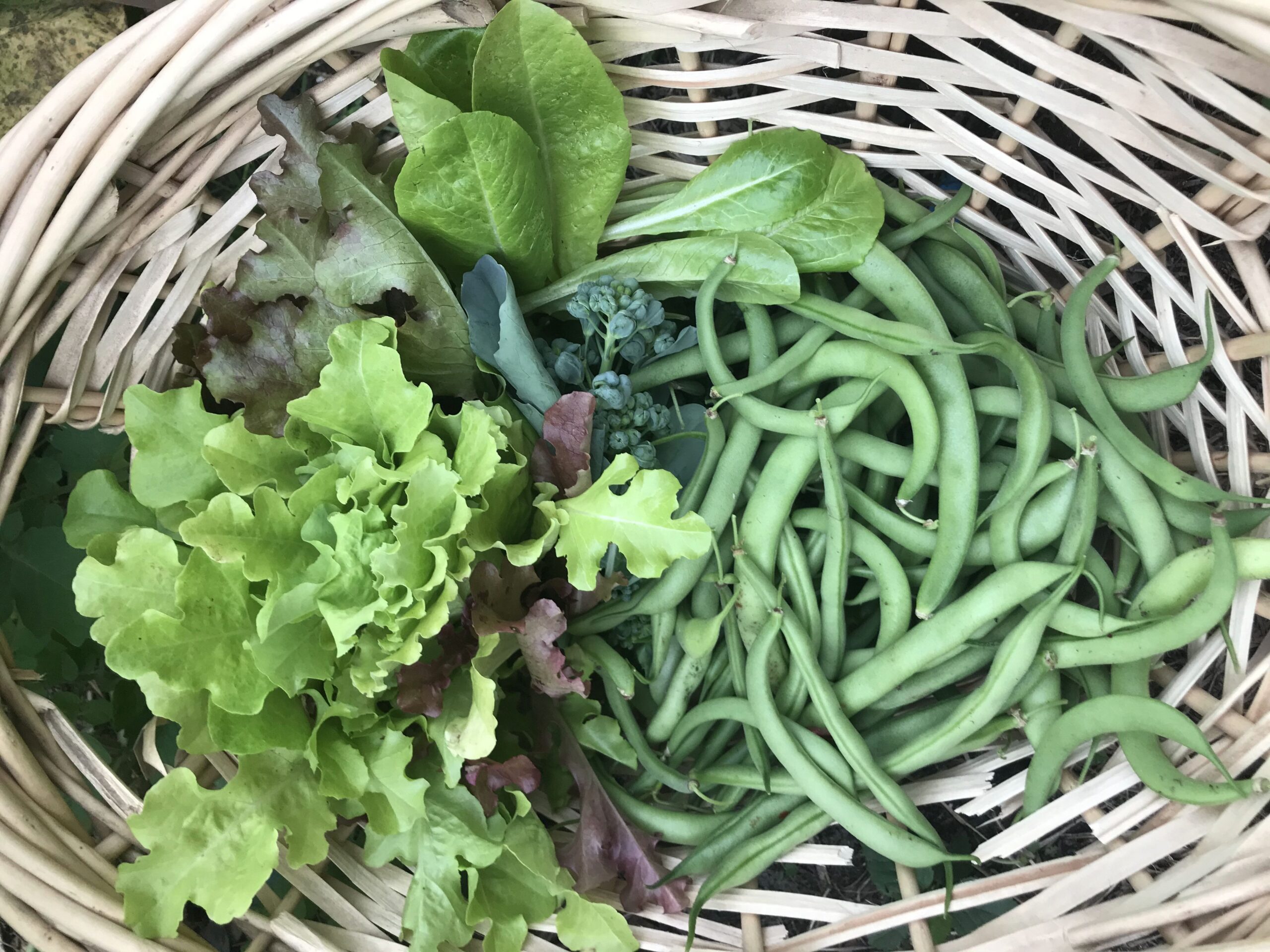
December and January were weird, am I right? How about that whole week of winter? Usually, Florida gardeners are doing the majority of their spring planting in February. I don’t know about you, but I certainly didn’t feel confident about starting anything in the greenhouse. Too often, temperatures will drop into the 30s and 40s in mid-March. So be prepared to cover tender vegetable plants or bring tiny seedlings indoors.
Here on the Gulf Coast, the two major hurricanes in the fall and the persistantly cold weather in December meant a non-starter on our spring seed sowing. My fall tomatoes went in late (in November), and managed to survive the cold spells. So, I’m just going with those. I do have some peppers ready to plant out and I did start some cucumbers that I’ll plant out soon.
It pays to follow the forecast and be prepared for anything and everything. However, for the most part, it’s definitely time to get planting in February, wherever in Florida you live.
South Florida
Gardeners in Zones 10-11 usually find that they can keep their starter trays outdoors through most of February. You’ll want to keep them under cover and move indoors in the case of a cold snap.
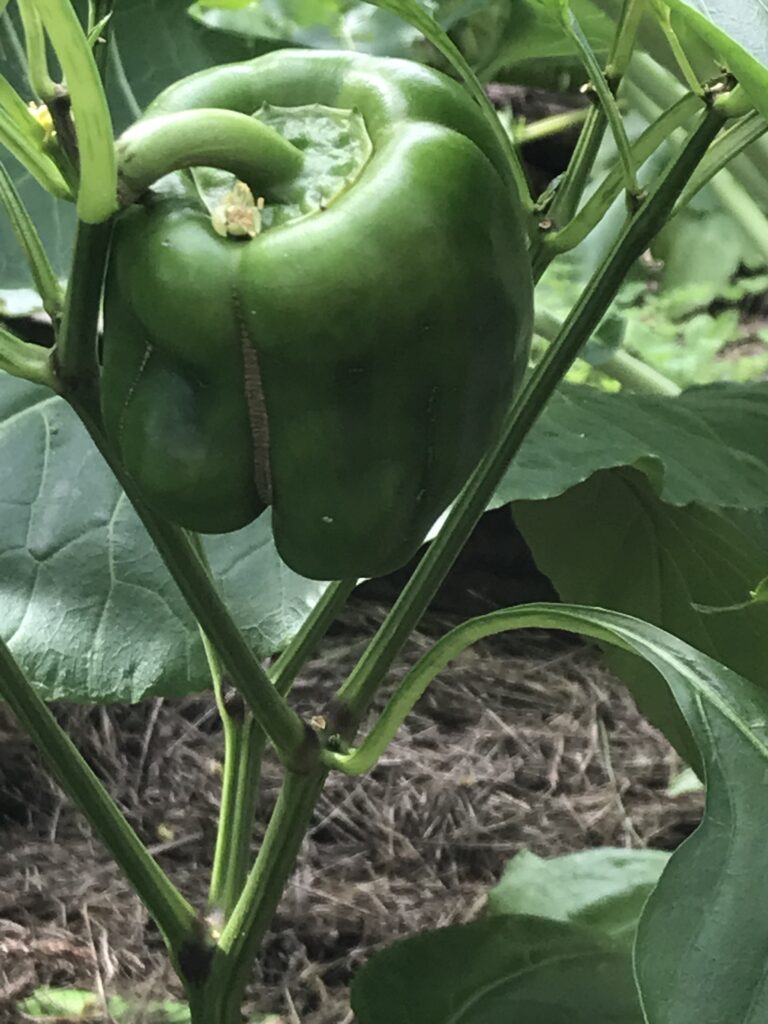
Start Indoors in February for South Florida
In February, we’re sowing the following starter plants:
- basil
- cantaloupe
- corn
- cucumbers (more)
- eggplant
- honeydew
- peppers (more)
- summer squash
- tomatoes (more)
- watermelon
- winter squash
Other edible vegetables you can start indoors in February in South Florida Zones 10-11 include:
- chives
- cilantro
- dill
- fennel
- luffa
- marjoram
- oregano
- parsley
- rosemary
- thyme
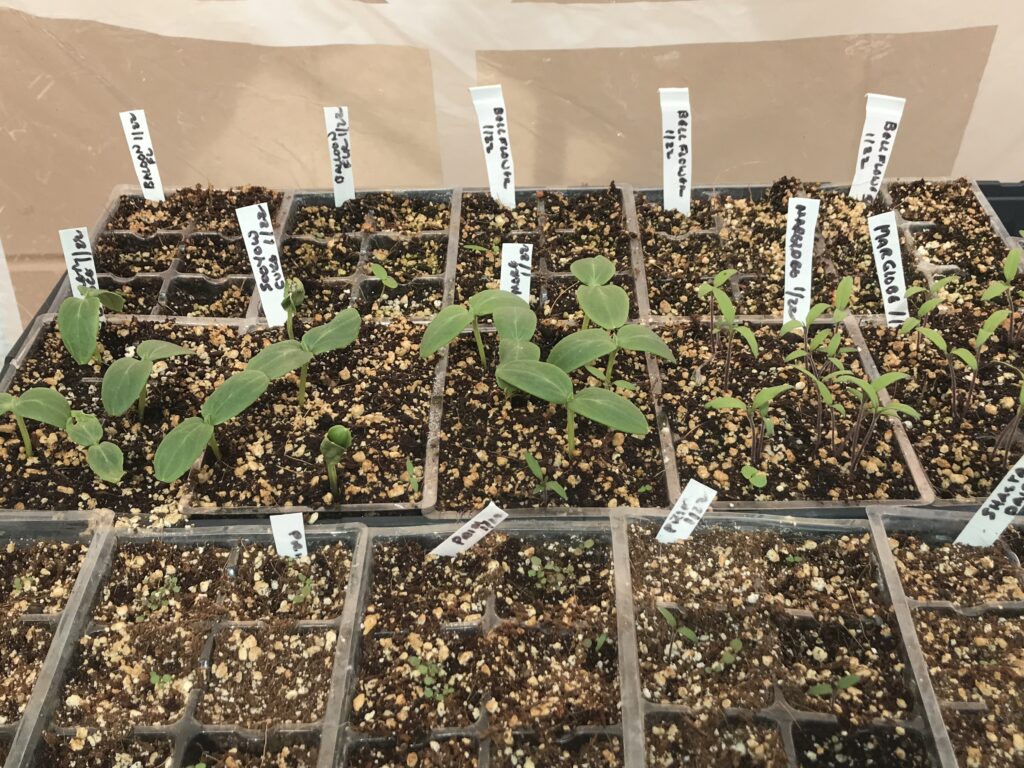
Direct Sow in February for South Florida
I like to start almost all of my vegetable garden in cells or soil blocks and plant out in a few weeks. But I do direct sow a few things that simply perform better when planted directly.
Other edible garden plants suitable for direct sowing in February in Florida Zones 10-11 include:
- arugula
- beets
- bush beans
- cabbage
- carrots
- cassava
- chaya
- collards
- comfrey
- corn
- daikon
- ginger
- green onions
- Irish (white) potatoes
- kohlrabi
- leeks
- lettuce
- mustard
- okra
- peas
- pole beans
- radish
- shallots
- sweet potato slips
- Swiss chard
- turnips
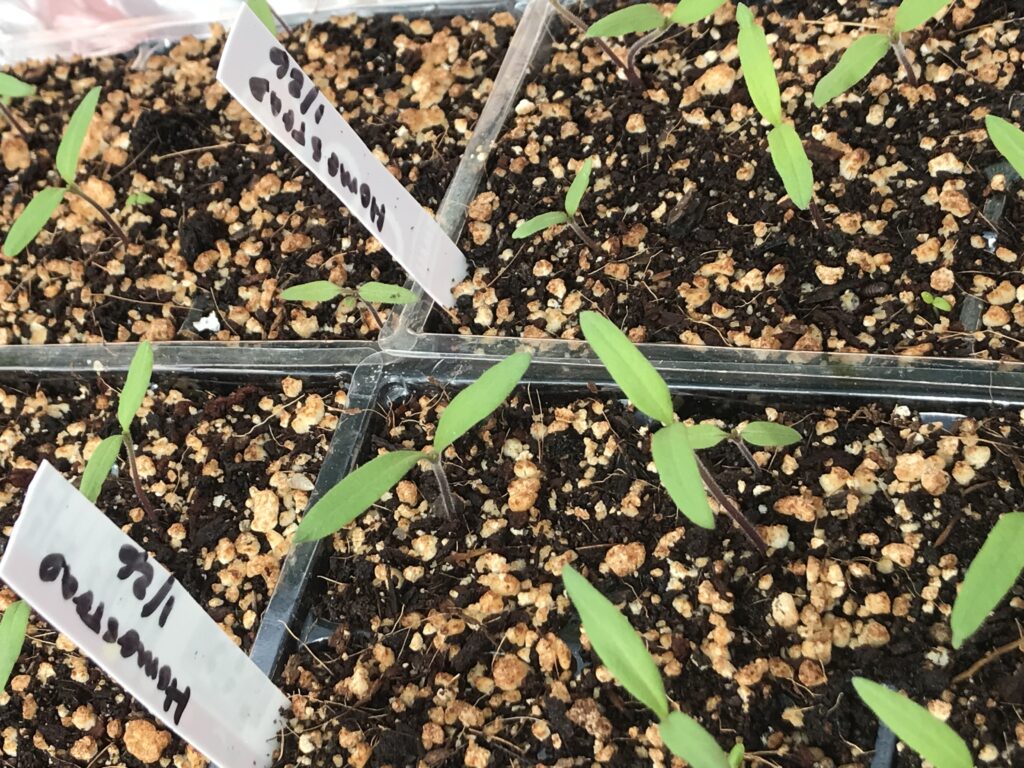
Central Florida
The central strip of the state that extends from the Gulf Coast to the Atlantic covers Zone 9b and 10a. Zone 10a includes the cities of Tampa and Orlando, while some of the more inland areas remain in 9b. Ocala and Gainesville are in 9a. Jacksonville is in zone 9b.
Even though Jacksonville is technically located in the north of the state, its proximity to the coast means a warmer climate. Keep track of the different microclimates in your garden and adjust as needed to meet those conditions.
Sow Indoors in February for Central Florida
Gardeners in Central Florida in Zones 9a to 9b can sow starter plants indoors until they’re well established enough to plant out at the end of March:
- basil
- cantaloupe
- Cape gooseberry
- chives
- cilantro
- cucumbers
- dill
- eggplant
- leeks
- luffa
- marjoram
- okra
- oregano
- parsley
- peppers, chili
- peppers, sweet
- rosemary
- summer squash
- thyme
- tomatoes
- winter squash
Direct Sow in February for Central Florida
Central Florida gardeners can sow many cold-hardy vegetables directly, if they prefer:
- arugula
- beans, bush, and pole
- beets
- broccoli
- Brussels sprouts
- cabbage
- carrots
- cauliflower
- collards
- comfrey
- corn
- daikon
- green onions
- Irish potatoes
- kale
- kohlrabi
- lettuce
- mustard
- peas
- pumpkins
- radish
- spinach
- sweet potato slips
- Swiss chard
- turnips
- watermelon
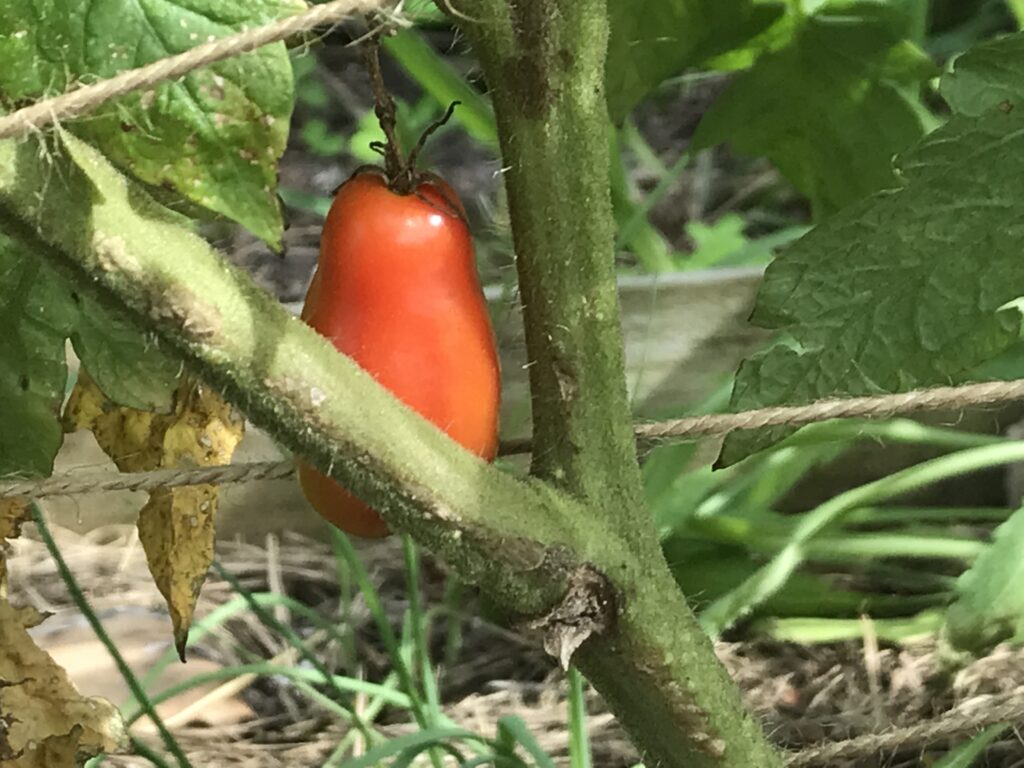
North Florida
North Florida gardeners find themselves in Zone 9a and 9b. A small few are in 8b, after the USDA zone map update of 2023.
But most of the northern span of the state is solidly placed in zone 9, which includes the city of Tallahassee and most of the panhandle.
Florida Gardeners along the Gulf Coast near Pensacola and Panama City may find that their proximity to water gives them more leeway for planting early. To pinpoint your growing zone, use the search tool on the USDA website.
Sow Indoors in February in North Florida
The last frost date for Zone 9 is in February, but it pays to be cautious considering how eratic our weather has been. North Florida gardeners may prefer to get a jump on spring by starting the following seeds indoors:
- cantaloupe
- chives
- cilantro
- cucumber
- dill
- eggplant
- marjoram
- oregano
- parsley
- peppers, chili, and sweet
- pumpkins
- rosemary
- summer squash
- thyme
- tomatoes
- winter squash
Sow Direct in February in North Florida
Temperatures will remain low enough for many cool-season vegetables that you can plant directly in Zone 9:
- arugula
- beans, bush, and pole
- beets
- broccoli
- cabbage
- carrots
- cauliflower
- collards
- corn
- garlic
- green onions
- Irish potatoes
- kale
- kohlrabi
- lettuce
- mustard
- onion sets
- peas
- radish
- spinach
- Swiss chard
- turnips
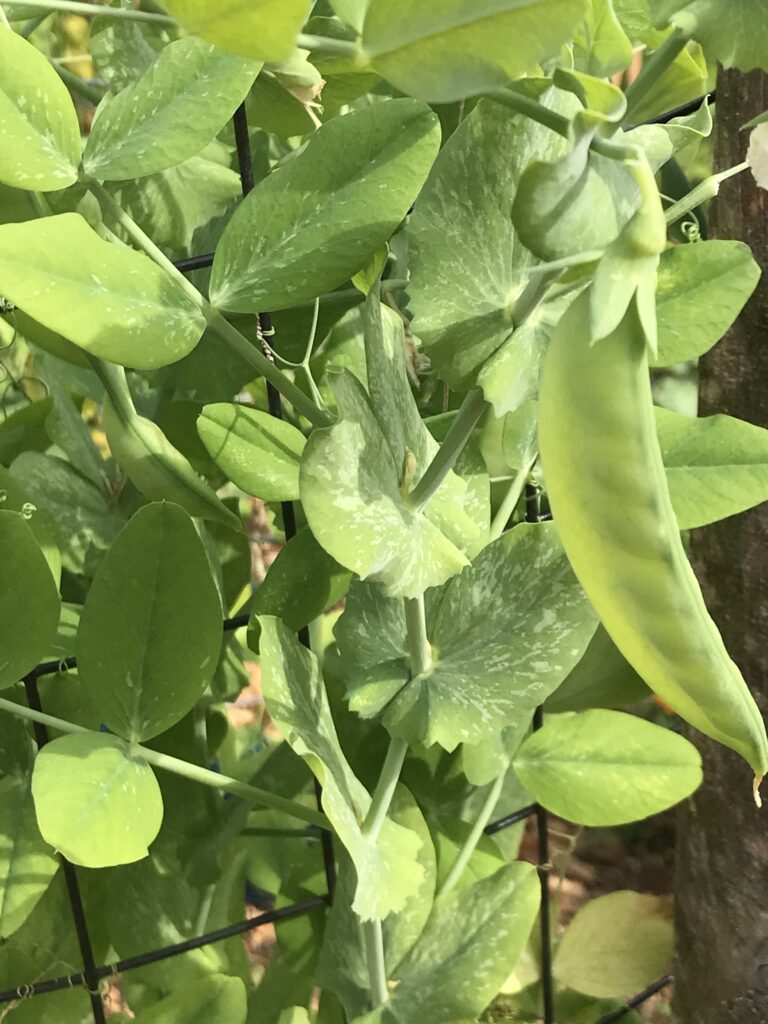
Getting Ready for Your Planting in February in Florida
It sometimes seems like the seasons change too quickly in Florida. And yes, we do actually have seasons. A few years of gardening here will teach you how to note the differences, and you’ll soon feel them in your bones.
It also sometimes seems like you have to plant everything all at once if you hope to get any kind of yield. The mildness of spring can quickly become the sweltering heat of summer. That’s if you don’t get a surprise frost in March!
But relax and take it one step at a time. If you start sowing your spring seeds in late January or in February, you’ll find you can pace yourself. You still have time for some cool-season vegetables early in the year, so take advantage of it.
Warm-season vegetables, like peppers and tomatoes, can be potted up as they grow until it’s safe to plant them into the garden. Be prepared to cover anything outdoors, if necessary, but otherwise, succession planting is your friend.
If you need a tool that will help you keep track of what to plant and when, as well as some helpful advice on the best vegetable varieties to plant in Florida, check out our Florida Gardening Planner. You’ll also find even more vegetable varieties for planting in February in Florida. You can purchase it in print from Amazon or as a digital download on Etsy to print out as needed.
Last update on 2025-06-19 / Affiliate links / Images from Amazon Product Advertising API
This product presentation was made with AAWP plugin.





















